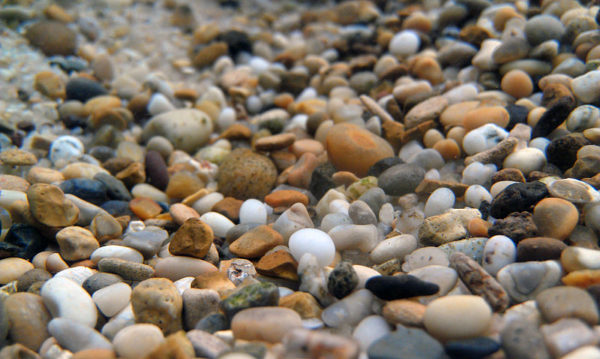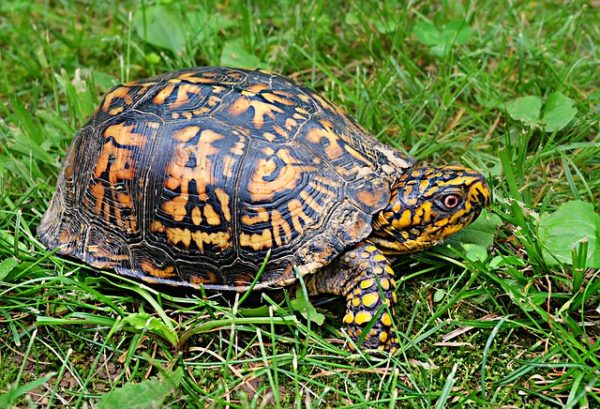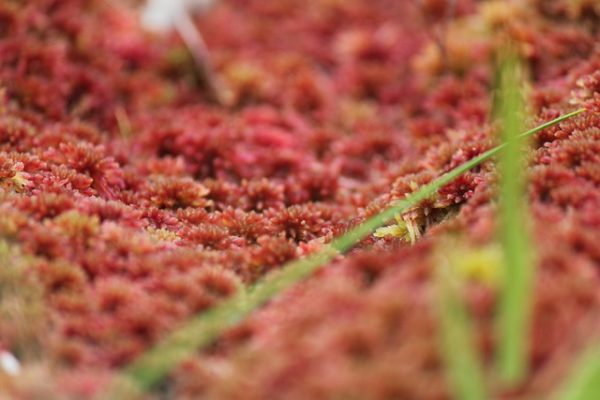When you get a box turtle as a pet, make sure you provide everything it needs to be comfortable. Substrate for box turtle habitat may seem insignificant, but believe me when I say it is not. It’s a significant duty to choose the suitable substrate for your box turtle.
Various people have different ideas about what the best box turtle substrate is. Natural bedding is preferred by some, whereas others choose commercial bedding. But which is the most effective?
This guide will provide expert advice on which substrate is ideal for your Box turtle. Continue reading to get all of your questions about substrates for your beloved dogs answered!
To know more about turtle care!
Table of Contents
What is a substrate?

A substrate is a material that reptile owners use as bedding for their animals. As a substrate, clay, coconut fiber, wood shavings, and various other materials are employed. Not all reptiles require the same substrate. Each species or subspecies prefers a different type of substrate. Many pet owners prefer commercial substrate, which is superior to the natural substrate in some situations. The subspecies or species determine the type of substrate chosen.
The substrate has several functions. Some are necessary for a healthy ecosystem, while others are purely decorative. It adds color to the aquarium’s theme, from bright hues to fit with a castle or mermaid theme for children’s aquariums to a more natural brown gravel to go with driftwood and real plants in adult aquariums. Gravel also serves as a breeding ground for helpful bacteria that break down the waste products that the fish create.
To know about what to feed your turtle, click here!
The Best Substrate For A Box Turtle

The substrate, or bedding material, should be simple to clean and disinfect and non-toxic to the box turtle if eaten unintentionally. It’s best to use newspaper, butcher paper, paper towels, commercially available paper-based pellet bedding, or artificial reptile grass (often known as “reptile carpet”). Because box turtles like to burrow, some individuals recommend using straw, hay, or alfalfa pellets. If you’re going to use reptile carpet, make sure you have enough to replace it every day so that the filthy carpet can be cleaned. To disinfect the dirty reptile carpet, clean it with regular soap and water and diluted bleach (1 part bleach to 10 parts water). After washing, rinse the rug thoroughly and hang it to dry until the next cage cleaning.
The optimal substrate can mimic a box turtle’s environment in the wild. Consider where the majority of box turtles call home. The majority of box turtles reside in densely forested places where sunlight hardly reaches the ground. The soil is loose and damp, and the terrain is not sandy, dry, or packed.
It demonstrates two points.
- High humidity is ideal for box turtles.
- Box turtles can survive in low-light conditions.
To imitate the wild ecosystem, you must perform three simple things.
- Plant small trees, shrubs, or other types of vegetation.
- Create a humidified environment.
- Place loose, moist soil that can hold the earth’s moisture.
According to many Turtle fans, the Zoo Med Eco Earth Compressed Coconut Fiber Substrate is the best substrate they’ve ever used. The substrate is available in two forms: loose dirt and bricks. For many people, the brick form is their preferred option.
Zoo Med Eco Earth Compressed is a compressed version of Zoo Med Eco Earth. Coconut Fiber Substrate is made up of crushed coconut fibers in bricks. First, to make a substrate out of bricks, place them in a giant bucket. It will expand into looser, moister bedding when you add a little warm water.
The expansion is rapid. The substrates of these brick types allow you to choose the type of bedding you want. Add a little warm water to your mattress if you want it damp and moist. If you don’t want your bedding to become wet, break the bricks by hand without adding any water.
Because it is organic, non-toxic, and affordable, the brand and model are ideal for use as box turtle bedding. This is sometimes used as a box turtle’s bedding. They prefer it since it is non-sticky and gives the enclosure a sand-like texture.
Combining it with other materials makes the substrate ideal for burrowing. Box turtles often have difficulty burrowing into the substrate because it does not keep their shape. The box turtle will not mine in this substrate if there is no mixing. It is recommended that the substrate dirt be mixed. You’ll need damp, clumpy soil for this. To ensure that the substrate holds together, mix it in a 50:50 ratio. If you spray water daily, the coconut fiber may store a lot of moisture and maintain the humidity level in the enclosure high. You can also use leaf litter, peat moss, or sphagnum moss for soil in the substrate. Instead of being the base of the mattress, make these elements to be the toppings. Box turtles can also be housed on natural substrates. A box turtle’s favorite food is coconut husk fiber. To make the substrate more pleasant for the box turtle, large bark nuggets and sand can be combined. Other components can also be mixed.
Coconut fiber is normally showcased as a reduced square or free powder. Take the square, place it in a huge pail, add a little warm water, and it will rapidly venture into more open, wet sheet material. It’s non-harmful, all-normal, and truly sensible. It’s also extraordinary for use as a substrate for box turtle bedding.
Individuals typically use Eco-Earth, natural soil, and sphagnum greenery for my case turtle. Thus, the writing is on the wall. Eco-Earth ought not be the main box turtle bedding in each environment. It’s extremely free, so get soil or dirt assuming you want something more smaller. Your container turtle will struggle tunneling into this is on the grounds that it doesn’t keep its shape very well all alone. Thus, your turtle will push it aside of your natural surroundings. It’s desirable over blend it in with soil, especially extremely clammy, clumpy soil. It will hold up much better on the off chance that you blend it in with at minimum a 50-50 proportion. Since coconut fiber holds dampness well, moistening your fenced in area consistently should help to keep the moistness high. Sphagnum greenery, for instance, is suggested as a garnish for any substrate you pick. It seals in dampness and adds a sprinkle of shading to your space.
To know about the best basking platforms for your turtles, click here!
Substrates You Should Avoid
Every box turtle owner desires nice and secure bedding for their pet turtle. However, not all of the materials are suitable for your box turtle. Some materials are even poisonous to box turtles.
Read the materials that come with a substrate before purchasing or selecting one. It would help if you stayed away from any substrate that contains:
- Pearlite is a volcanic rock that comes in a variety of colors. It appears to be little pebbles.
- A mineral called Vermiculite is found in the form of Vermiculite. It was built with the ability to expand in mind.
- Styrofoam is a polystyrene foam product.
- Any chemicals or colors that have been applied.
- Anything having extra ingredients.
These should be avoided because your box turtle might consume them. These elements are dangerous to the health of box turtles and can cause intestinal difficulties. Even some of them can obstruct the intestines of the box turtle.
Here’s a list of substrates to stay away from:
- The newspaper that has been recycled
- Cat Litter
- Shells of walnuts
- Aspen shavings rodent pellet bedding
- Using non-organic potting soil
- Calcium sand Gravel
- Silica \sSand
- The bark is pink.
- Chips of cedarwood
- Newspaper
- Carpet made of reptiles
- Anything too rough
The calcium-sand (calcium sand) issue is that it is scorched and does not retain moisture properly. It will only dry out the skin of your turtle. Regular sand is fine, but it might cause impaction in your turtle’s digestive tract if consumed in significant quantities. Gravel, shavings, walnut shells, and other similar items can damage your turtle’s shell, get into its eyes, and are poor at retaining humidity.
Cat litter is exceptionally hazardous to use as bedding since it absorbs all moisture and is detrimental to your turtle. A newspaper does not retain humidity and becomes moldy very quickly if wet. On the other hand, reptile carpet is OK, except it does not have moisture and coconut fiber and does not allow for burrowing.
Avoid using the beddings and substrates specified above at all costs!
How Much Substrate Do I Need For A 55-Gallon Tank?
The more space you have in your tank or territory, the better. Essentially certain region of your walled in area ought to have a profundity of 3-4 creeps of substrate.
The clarification behind this is as per the following:
Tunneling is vital for the psychological and actual wellbeing of box turtles. Since you’ve de-pressurizeed the coconut fiber and set it in your living space, your crate turtle will eat it! It will seem unkempt and disgusting. Your crate turtle will be totally canvassed in it quickly. This is very regular. It will require some investment to pack back in and become less dirty. It’s likewise an astounding way to deal with utilize a line of tiles or even mid-sized smooth stones to isolate your water bowl from the coconut fiber. Whenever your crate turtle comes to drink from your water dish, it will follow a piece of the substrate over the stones, keeping your water dish clean. In the event that squashed coconut fiber isn’t for you under any condition, there are bunches of different arrangements.
Qualities of Good Bedding
One of the most critical aspects of growing a healthy turtle is choosing the correct bedding or substrate. After all, they’ll be spending the majority of their time in and around it. Some species even burrow under it to obtain some seclusion or to escape the heat. Even though it is such a crucial feature, or perhaps because of it, many individuals can’t seem to agree on the finest bedding for tortoise keepers.
The following characteristics must be present in every tortoise bedding. It should be simple to dig up, non-toxic, and sturdy enough for your tortoise to walk on. We recommend obtaining specialized reptile bedding from a trustworthy source to keep your turtle happy and healthy. Below, we’ll go over the benefits and drawbacks of each variety. The qualities of good bedding are as follows:
Moisture Retention
A substrate with an excess of dampness could give a favorable place to microscopic organisms and other risky microorganisms. They can cause shell decay, respiratory contaminations, and different afflictions. Form will develop on sheet material that doesn’t deplete as expected, which is a worry for you. Appropriate sheet material ought to have the option to hold a lot of dampness, however just for a couple of hours. To keep away from puddles of water, the sheet material should deplete actually.
Suitable for digging
Digging through their bedding is a favorite pastime of many tortoises. If the substrate is deep enough, some species have been known to dig burrows through it. Most of the time, all you’ll see are palettes dug into the bedding. As a result, the suitable substrate should yield easily when tortoises dig into it while also maintaining enough structural integrity to prevent it from collapsing after the tortoise has dug into it.
Prevents Impaction
When it comes to picking the correct bedding, one of the risks that many people will have to deal with is the prospect of their tortoises becoming impaled. Impaction occurs when a material enters a turtle’s digestive system and is not broken down or passed through. This object will induce an obstruction, and the gastrointestinal tract will break as a result. The best bedding is that which a turtle could pass through without difficulty. Certain fibrous materials that aren’t dirt can also be used because the tortoise can safely consume them.
Non-toxic
Your turtles ought to have bedding that isn’t risky to them. This might seem undeniable, however what is hurtful to turtles may not be clear all the time to people. Mulch or wood chippings, for instance, are great at keeping dampness and can utilized as bed. In spite of being essentially harmless to people, a few sorts of wood contain a pitch that can be hurtful to some turtle species.
Combination Of Substrate For Bedding

Here are a couple of combinations of the above beddings that I would recommend:
- Peat moss and coconut fiber are combined.
- Coconut fiber combined with organic potting soil or earth.
- Austin’s Turtle Page recommends a combination of organic soil, sphagnum moss, and cypress mulch for Eastern box turtles.
- Coconut fiber and sphagnum moss are combined.
This is because sphagnum moss is excellent at retaining both moisture and heat. The majority of box turtles adore burrowing into it.
In the first part of the day, a day by day fog of water to a coconut fiber and sphagnum greenery blend is an incredible mix. The dampness from the fog will be held by the sphagnum greenery and delivered over the course of the day. Also, it will keep the sheet material comfortable and sodden.
Conclusion
With so many options, deciding on the best bedding isn’t as straightforward as you may assume. Whatever material you choose should suffice on its own as long as it meets the specifications. Doing your research and experiment is the most appropriate advice we can provide you. You may eventually come up with the perfect substrate for you and your tortoise on your own.
No related posts.

